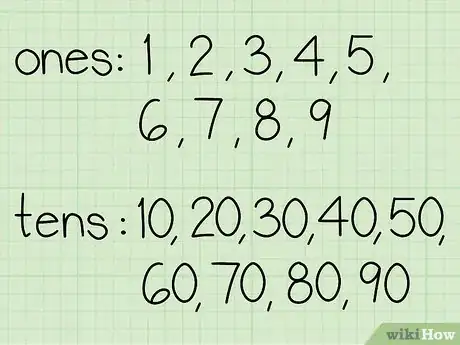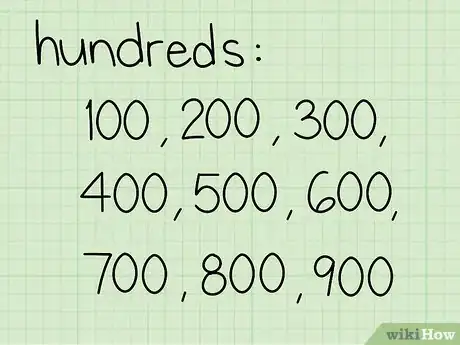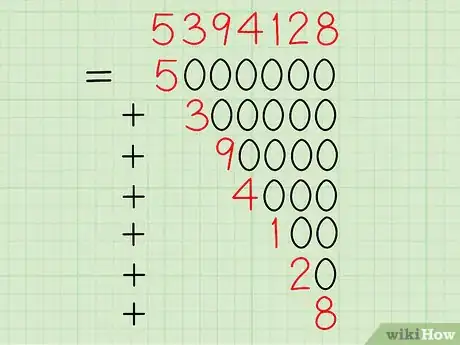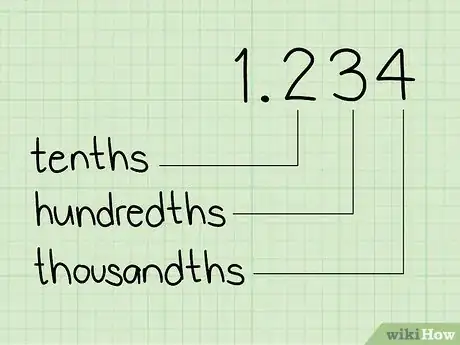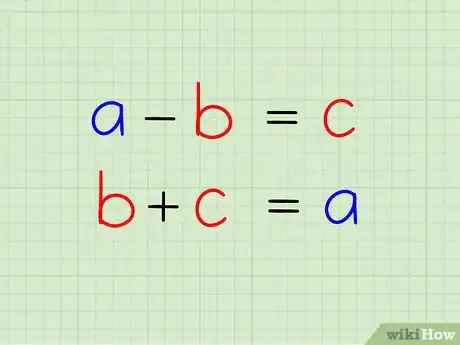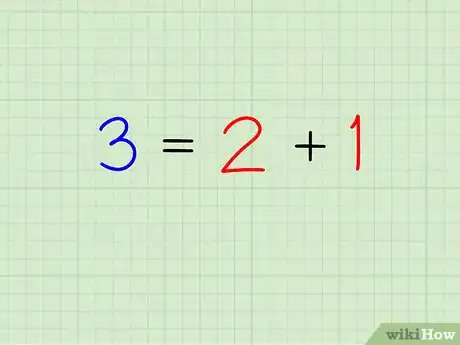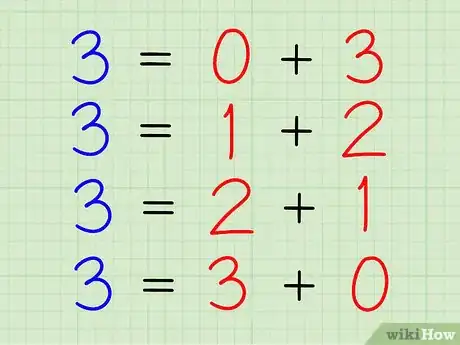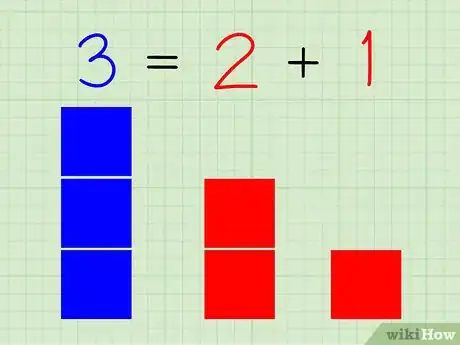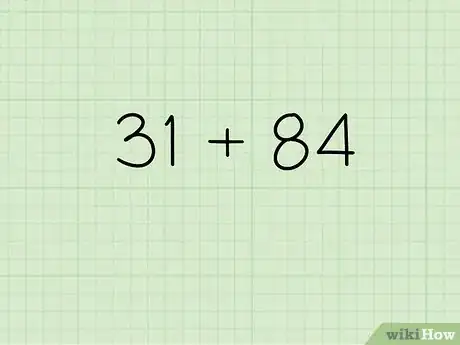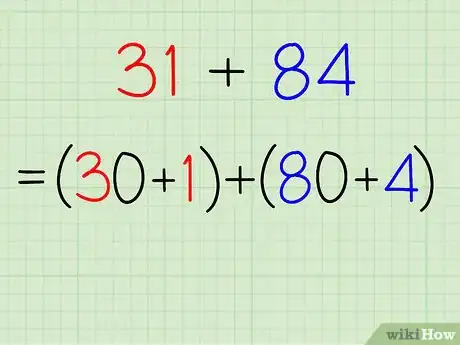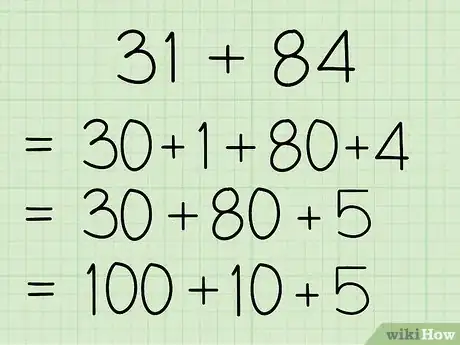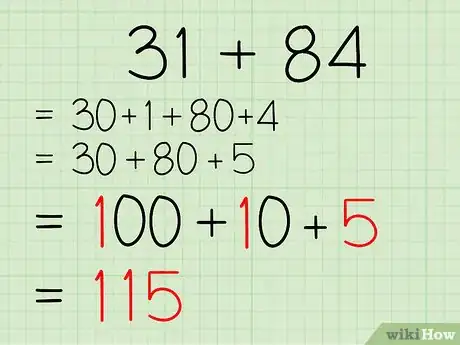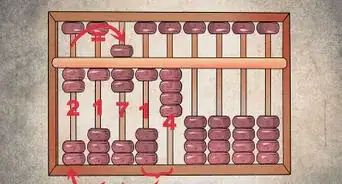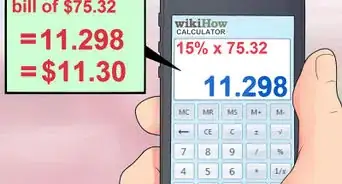X
wikiHow is a “wiki,” similar to Wikipedia, which means that many of our articles are co-written by multiple authors. To create this article, volunteer authors worked to edit and improve it over time.
There are 7 references cited in this article, which can be found at the bottom of the page.
This article has been viewed 107,854 times.
Learn more...
The practice of decomposing numbers allows young students to understand the patterns and relationships between digits within a larger number and between numbers within an equation. You can decompose numbers into their hundreds, tens, and ones places, or you can decompose by separating numbers into their various addends.[1]
Steps
Method 1
Method 1 of 3:
Decomposing into Hundreds, Tens, and Ones
-
1Understand the difference between "tens" and "ones." When you look at a number with two digits and no decimal point, the two digits represent a “tens” place and a “ones” place. The “tens” place is on the left, and the “ones” place is on the right.[2]
- The number in the “ones” place can be read exactly as it appears. The only numbers that belong in the “ones” place are all the numbers from 0 through 9 (zero, one, two, three, four, five, six, seven, eight, and nine).
- The number in the “tens” place only looks like the number in the “ones” place. When viewed separately, however, this number actually has a 0 after it, making the number larger than a number in the “ones” place. The numbers that belong in the “tens” place include: 10, 20, 30, 40, 50, 60, 70, 80, and 90 (ten, twenty, thirty, forty, fifty, sixty, seventy, eighty, and ninety).
-
2Break apart a two digit number. When you are given a number with two digits, the number has a “ones” place piece and a “tens” place piece. To decompose this number, you will need to separate it into its separate pieces.[3]
-
Example: Decompose the number 82.
- The 8 is in the “tens” place, so this part of the number can be separated and written as 80.
- The 2 is in the “ones” place, so this part of the number can be separated and written as 2.
- When writing out your answer, you would write: 82 = 80 + 2
- Also note that a number written in a normal way is written in its "standard form," but a decomposed number is written in "expanded form."
- Based on the previous example, "82" is the standard form and "80 + 2" is the expanded form.
Advertisement -
Example: Decompose the number 82.
-
3Introduce the "hundreds" place. When a number has three digits and no decimal point, that number has a “ones” place, “tens” place, and “hundreds” place. The “hundreds” place is on the left side of the number. The “tens” place is in the middle, and the “ones” place is still on the right.[4]
- The “ones” place and “tens” place numbers work exactly as they do when you have a two digit number.
- The number in the “hundreds” place will look like a “ones” place number, but when viewed separately, a number in the “hundreds” place actually has two zeroes after it. The numbers that belong in the “hundreds” place position are: 100, 200, 300, 400, 500, 600, 700, 800, and 900 (one hundred, two hundred, three hundred, four hundred, five hundred, six hundred, seven hundred, eight hundred, and nine hundred).
-
4Break apart a three digit number. When you are given a number with three digits, the number has a “ones” place piece, “tens” place piece, and “hundreds” place piece. To decompose a number of this size, you need to separate it into all three of its pieces.[5]
-
Example: Decompose the number 394.
- The 3 is in the “hundreds” place, so this part of the number can be separated and written as 300.
- The 9 is in the “tens” place, so this part of the number can be separated and written as 90.
- The 4 is in the “ones” place, so this part of the number can be separated and written as 4.
- Your final written answer should look like: 394 = 300 + 90 + 4
- When written as 394, the number is in its standard form. When written as 300 + 90 + 4, the number is in its expanded form.
-
Example: Decompose the number 394.
-
5Apply this pattern to infinitely larger numbers. You can decompose larger numbers using the same principle.[6]
- A digit in any place-position can be separated out into its separate piece by substituting the numbers to the right of the digit with zeroes. This is true no matter how large the number is.
- Example: 5,394,128 = 5,000,000 + 300,000 + 90,000 + 4,000 + 100 + 20 + 8
-
6Understand how decimals work. You can decompose decimal numbers, but every number placed past the decimal point must be decomposed into a position piece that is also written with a decimal point.[7]
- The “tenths” position is used for a single digit that comes after (to the right of) the decimal point.
- The “hundredths” position is used when there are two digits to the right of the decimal point.
- The “thousandths” position is used when there are three digits to the right of the decimal point.
-
7Break apart a decimal number. When you have a number that includes digits to both the left and right of the decimal point, you must decompose it by breaking apart both sides.[8]
- Note that all numbers that appear to the left of the decimal point can still be decomposed in the same manner they would be when no decimal point is present.
-
Example: Decompose the number 431.58
- The 4 is in the “hundreds” place, so it should be separated and written as: 400
- The 3 is in the “tens” place, so it should be separated and written as: 30
- The 1 is in the “ones” place, so it should be separated and written as: 1
- The 5 is in the “tenths” place, so it should be separated and written as: 0.5
- The 8 is in the hundredths place, so it should be separated and written as: 0.08
- The final answer can be written as: 431.58 = 400 + 30 + 1 + 0.5 + 0.08
Advertisement
Method 2
Method 2 of 3:
Decomposing into Various Addends
-
1Understand the concept. When you decompose a number into its various addends, you are breaking that number apart into different sets of other numbers (addends) that can be added together to get the original value.[9]
- When one addend is subtracted from the original number, the second addend should be the answer you get.
- When both addends are added together, the original number should be the sum you calculate.
-
2Practice with a small number. This practice is easiest to do when you have a single digit number (a number that only has a “ones” place).
- You can combine the principles learned here with those learned in the “Decomposing into Hundreds, Tens, and Ones” section when you need to decompose larger numbers, but since there are so many possible addend combinations for larger numbers as a whole, this method would be impractical to use alone when working with large numbers.
-
3Work through all the different addend combinations. To decompose a number into its addends, all you need to do is write down all of the different possible ways of creating the original problem number using smaller numbers and addition.
-
Example: Decompose the number 7 into its different addends.
- 7 = 0 + 7
- 7 = 1 + 6
- 7 = 2 + 5
- 7 = 3 + 4
- 7 = 4 + 3
- 7 = 5 + 2
- 7 = 6 + 1
- 7 = 7 + 0
-
Example: Decompose the number 7 into its different addends.
-
4Use visuals, if necessary. For someone trying to learn this concept for the first time, it might be helpful to use visuals that demonstrate the process in practical, hands-on terms.
- Start with the original number of something. For instance, if the number is seven, you could start with seven jellybeans.
- Separate the pile into two different piles by pulling one jellybean to the side. Count the remaining jellybeans in the second pile and explain that the original seven have been decomposed into “one” and “six.”
- Continue separating jellybeans into two different piles by gradually taking away from the original pile and adding to the second pile. Count the number of jellybeans in both piles with each move.
- This can be done with a number of different materials, including small candies, paper squares, colored clothespins, blocks, or buttons.
- Start with the original number of something. For instance, if the number is seven, you could start with seven jellybeans.
Advertisement
Method 3
Method 3 of 3:
Decomposing for Equations
-
1Look at a simple addition equation. You can combine both decomposition methods to break these types of equations apart into different forms.[10]
- This is easiest when used for simple addition equations, but it becomes less practical when used for long equations.
-
2Decompose the numbers in the equation. Look at the equation and separate the numbers into separate "tens" and "ones" places. If necessary, you can further separate the "ones" by decomposing them into smaller chunks.
-
Example: Decompose and solve the equation: 31 + 84
- You can decompose 31 into: 30 + 1
- You can decompose 84 into: 80 + 4
-
Example: Decompose and solve the equation: 31 + 84
-
3Manipulate and rewrite the equation into an easier form. The equation can be rewritten so that each decomposed component stands separately, or you can combine certain decomposed components to help you make better sense of the equation as a whole.
- Example: 31 + 84 = 30 + 1 + 80 + 4 = 30 + 80 + 5 = 100 + 10 + 5
-
4Solve the equation. After rewriting the equation into a form that makes more sense to you, all you need to do is add up the numbers and find the sum.
- Example: 100 + 10 + 5 = 115
Advertisement
Community Q&A
-
QuestionHow do I decompose 63 - 28 into two problems?
 DonaganTop Answerer63 = 60 + 3. 28 = 20 + 8. 63 - 28 = (60 + 3) - (20 + 8) = 60 + 3 - 20 - 8 = 35.
DonaganTop Answerer63 = 60 + 3. 28 = 20 + 8. 63 - 28 = (60 + 3) - (20 + 8) = 60 + 3 - 20 - 8 = 35. -
QuestionHow do I decompose 1,000,000?
 DonaganTop Answerer1,000,000 + 0 + 0 + 0 + 0 + 0 + 0.
DonaganTop Answerer1,000,000 + 0 + 0 + 0 + 0 + 0 + 0. -
QuestionHow do I decompose 29 - 13?
 DonaganTop Answerer29 - 13 = (20 + 9) - (10 + 3) = (20 - 10) + ( 9 - 3) = (10) + (6) = 16.
DonaganTop Answerer29 - 13 = (20 + 9) - (10 + 3) = (20 - 10) + ( 9 - 3) = (10) + (6) = 16.
Advertisement
References
- ↑ https://sciencing.com/decompose-mean-math-7446158.html
- ↑ http://www.mathsisfun.com/numbers/numbers-compose-decompose.html
- ↑ https://jukebox.esc13.net/interactiveGlossary/HTML_files/decompose.html
- ↑ https://www.mathsisfun.com/numbers/numbers-compose-decompose.html
- ↑ https://achievethecore.org/content/upload/Lesson%20Plan_Composing%20and%20Decomposing%2010%20(Torney).pdf
- ↑ https://www.cuemath.com/numbers/numbers-up-to-4-digits/
- ↑ https://helpingwithmath.com/decomposing-numbers/#decomposing-decimal-numbers
- ↑ https://helpingwithmath.com/decomposing-numbers/#decomposing-decimal-numbers
- ↑ https://www.mathsisfun.com/numbers/numbers-compose-decompose.html
About This Article
Advertisement
